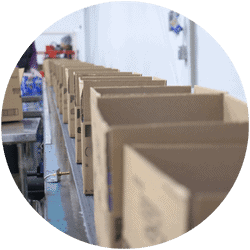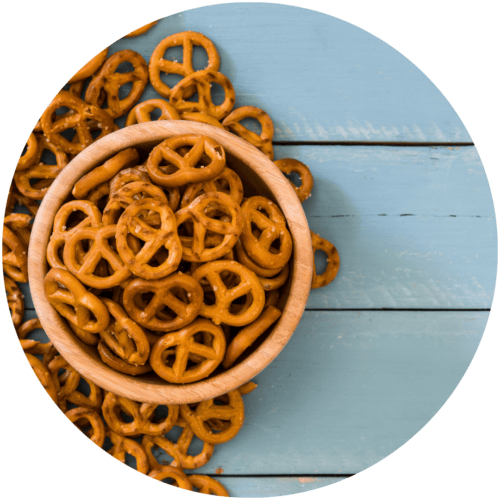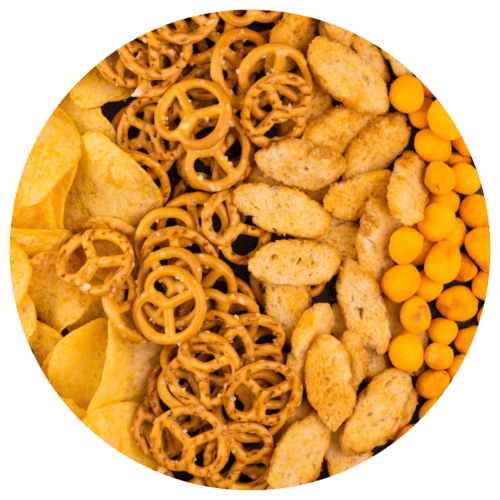Partnering with the Right Company
Econo-Pak’s product packaging services make designing and packaging your products easy. By understanding the design and engineering processes for many different packaging formats, we can help you develop the best container that meets your product’s unique requirements.
Econo-Pak designed our services to help you grow. Our team of packaging specialists offers cost-effective, timely, and innovative solutions for customers to scale into new markets, including:
- Club and wholesale stores
- Pharmacy
- Supermarkets
- Food services
- Retail
- Airlines
Our company excels in creating custom packaging strategies that enhance brand identity and attract customers, understanding that packaging is more than just functional—it’s a key component of marketing. Our expert team offers a wealth of experience in design and engineering across various packaging formats, aiming to maximize visual appeal and marketing impact while being cost-effective.
We collaborate closely with clients to ensure our packaging designs resonate with their brand values and appeal to their target audience. Catering to multiple industries within the food sector, we provide versatile and innovative packaging solutions that not only meet practical needs but also bolster the product’s market presence. Our commitment is to deliver packaging that effectively communicates a brand’s message and stands out in the competitive retail space.
Packaging Types from Econo-Pak
At Econo-Pak, we offer an extensive catalog of product packaging services to our business partners. We work hard to ensure that products get to market quickly and efficiently without any loss of quality. Our primary packaging options include:
 Stand Up Pouches
Stand Up Pouches
Our high quality, aesthetically appealing stand up pouches double as advertisements for your product by maintaining a strong shelf presence. Many food producers prefer stand up pouches to package nuts, candies, and other small items. We provide strong, easy-open pouches with windows/clear display panels to effectively influence customers to buy your product.
 Flow Wrapping
Flow Wrapping
Flow wrapping is a cost-effective packaging process in which operators feed the main product through a conveyance system that quickly and efficiently wraps and seals the packaging material over the product. Many retailers utilize flow wrapping services for their affordability and quick turnaround time. At Econo-Pak, our more than 240,000 square feet of production floor space allows us to successfully complete any customer flow wrapping order, no matter the size or scope.
 Shrink Wrapping
Shrink Wrapping
Manufacturers, retailers, and packagers use shrink wrap for a wide range of applications. Packaging specialists typically use this thin film of plastic to tightly wrap similar products together, ensuring optimal handling and distribution. We are an industry leader in scalable and highly efficient shrink-wrapping operations.
 Bulk Food Packaging
Bulk Food Packaging
Bulk food packaging helps to eliminate waste by reducing the number of containers needed for product storage. Additionally, it offers advantages in transparency, versatility, and environmental sustainability. Our bulk food packaging operations conform to the highest standards of safety and hygiene, and involve exceptional efficiency and quick turnaround times.
 Powder Filling
Powder Filling
Containers full of dry powders come in many different shapes, sizes, and configurations. We provide comprehensive powder-filling services, from wrapping to pouching to procurement. We also offer highly customized assistance in formats such as classic bottles and jars, stand-up pouches (SUPs), or multi-pack designs tailored to specific markets.
Econo-Pak’s packaging services encompass a diverse array of products that you commonly find on grocery store shelves. From essential baby products to delightful gummies, crispy cookies, savory crackers, and wholesome pasta, we have experience packaging it all. In the food industry, precise filling techniques and specialized equipment are paramount to ensure accurate dosage and minimize waste. Whether it’s filling snacks, powders, chocolates, baby formula, or any other dry food product into bottles, jars, pouches, or tubes, we have the capabilities to meet the specific packaging needs of each product.
Our team is dedicated to working closely with you, tailoring our services to your design specifications, and engineering a solution that perfectly accommodates your product. With our extensive experience and commitment to excellence, we are confident in our ability to provide contract packaging services for almost any type of dry food product.
 Product packaging is an essential aspect of successful retail. At Econo-Pak, our comprehensive product packaging services provide our business partners an easy and affordable end-to-end solution.
Product packaging is an essential aspect of successful retail. At Econo-Pak, our comprehensive product packaging services provide our business partners an easy and affordable end-to-end solution.



 Types of Products
Types of Products







